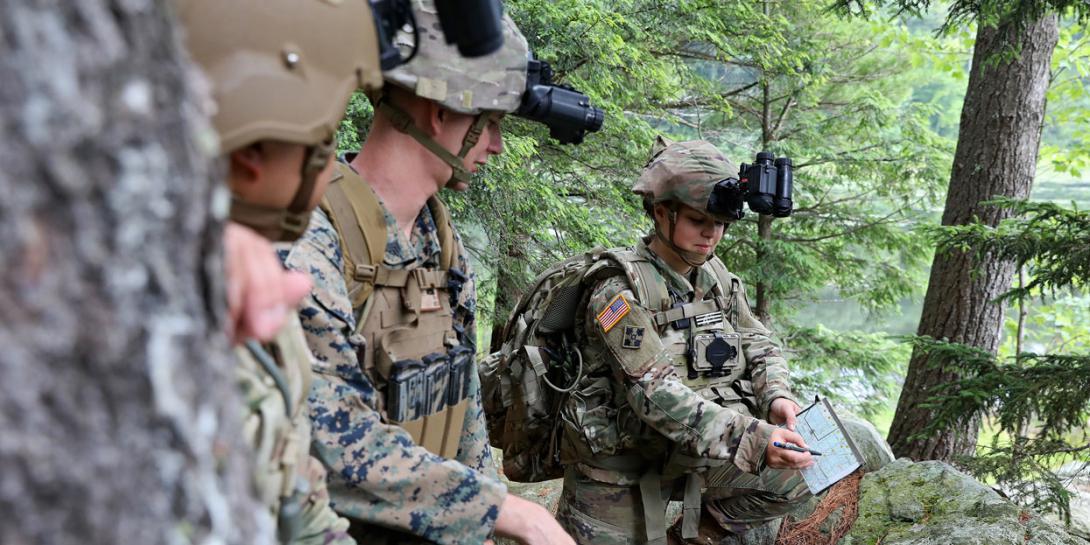Cybersecuring the Future Soldier
Brig. Gen. Anthony “Tony” Potts, program executive officer (PEO)-soldier, recently signed a new standard for 256-bit encryption for individual soldier systems. That is an increase from 128-bit encryption.
And since beginning the job about 18 months ago, he has stopped the once-common practice in the PEO-Soldier shop of signing cybersecurity waivers for the individual soldier equipment being developed. Furthermore, he is building a “robust capability” Risk Management Framework, which essentially specifies security controls for a system that involves organizational risk.
Future soldiers will need cybersecurity for constant and seamless connectivity. “We talk about the soldier as an integrated weapons platform, and the squad is an integrated combat platform. I want everything within a squad to be able to talk to each other,” Gen. Potts told the audience on the third day of the AFCEA TechNet Augusta 2019 conference in Augusta, Georgia.
Future soldiers will be connected to so much electronic equipment, they will essentially become systems of systems. “I don’t think overmatch on the next battlefield is going to come one individual product at a time. I think it’s going to come from the synergy of an integrated capability where we share data and we share information at the speed of battle. It gives you a completely different way to look at producing products,” he added.
Next month, the Army will begin fielding the Enhanced Night Vision Goggle-Binocular, which provides close combat forces the capability to observe and maneuver in all weather conditions, all lighting conditions and through obscurants or during other limited visibility conditions. "It is the best sensor we will have ever put on soldiers. If that’s all we did, it would be awesome,” Gen. Potts said.
But that’s not all. “We’re going to add to it augmented reality. We’re going to now give soldiers within the view of their goggles an augmented reality capability … so that they no longer have to look down to try to find a compass, try to find a map. We’ll provide it to them in their eyes,” the general explained.
Soldiers using traditional night vision googles must choose between a limited field of view or taking precious seconds to move the goggles out of the way, shoulder the weapon, locate the target and fire. “That’s great if you already know where your target is, but if you’re trying to do all of those things at once and it’s slowing you down by three or four seconds, you may have just lost that firefight,” Gen. Potts said. “But if I can leave my goggles down, and through my goggles I have this floating reticle, and I can see my target, and I can see 40 degrees beyond that, we’ve just given the soldiers a capability like none they’ve ever had before.”
The bottom line is that soldiers will be able to locate their targets more quickly. “It’s going to give him a thing called rapid target acquisition. So, in front of the soldier’s eyes while they’re looking through the night vision devices, they can now see targeting data,” the PEO explained.
Soldiers will receive that targeting data and situational awareness information using the Nett Warrior system enabled by the Integrated Tactical Network. “We give the soldier situational awareness—red forces, blue forces, targeting data. It fundamentally changes what a soldier sees, what a soldier can do and how his squad operates together,” Gen. Potts elaborated.
But that’s not all, either. Soldiers also will use a system called the Family of Weapon Sights-Individual. It offers thermal sights for the individual, crew-served and sniper weapons, giving soldiers the capability to see deep into the battlefield, increase surveillance and target acquisition range, and penetrate day or night obscurants.
And there’s even more. “We’re going to create a little network around the soldier. We’re going to give him what’s called Intrasoldier Wireless, which is an ultra wideband wireless system that is 128-bit encrypted. I’ve already signed a new standard that says we’re going to move to 256-bit encrypted,” he reported. “I want every single thing that we put on a soldier … to move the data around the soldier’s body so it can be shared,” he explained.
The Army also is building an “adaptive squad architecture,” which is a “modular, open scale architecture” and will release an early version in January.
The intent is for soldiers to remain connected whether dismounted or in a vehicle. “Everything has to be shareable. And not just on the soldier. I have to be able to do it on-platform and off-platform,” the general stated. “That dismounted soldier eventually is going to get into a Bradley or a Stryker, and they’ve got to walk into that Bradley or Stryker and be connected. Or, they’re going to get into a Black Hawk or into a CH-47, and we’ve got to seamlessly connect that soldier, that squad so that they maintain that situational awareness.”





Comments